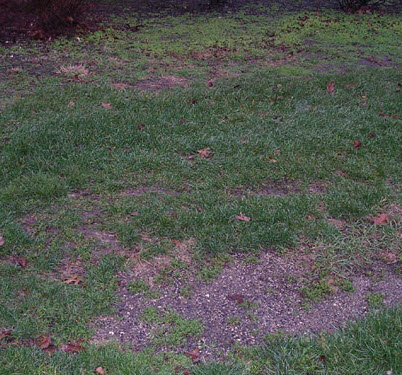Click below to listen to my 2 min. Garden Bite radio show: Types of grass seed for your lawn
Audio PlayerWe talked about overseeding your lawn but what’s the best mix for you? Depends!
There are blends and there are mixtures. A blend is the same type of grass but different cultivars. A mix has 2 maybe 3 different varieties of grasses for cultural diversity, for lawns that have differing sun/shade conditions and climate zone. The best recommendation is to figure out what you’ve got and then go to your local nursery and ask them what they would suggest OR your local county extension OR certainly, your local Master Gardeners.

Information on renovating your lawn from the University of MN Extension has extensive info! Scroll down to get to grass seed recommendations. This info is good for Wisconsin and Iowa too, as well as the eastern portions of South Dakota.
Information on dormant seeding (done typically in November) by the University of MN Extension.

In Minnesota (climate zone 3,4 and some 5), Kentucky Bluegrass is used most often because it’s pretty, it’s adaptable, cold tolerant and is generally able to recuperate from drought.

However, there are always drawbacks to using just one type of any plant. Diversity is a good thing as one type may have an issue one year, another can “take over” to keep your lawn looking good.
Other grass species include perennial ryegrass. It’s a great germinator and quick to establish, which helps protect the other seeds, but it’s not real tolerant of our cold winters and summer heat, so use only about a 25% mix.

Fine fescues is a category of about five different species that are often mixed together. These species include hard fescue, slender and strong creeping red fescue, Chewings fescue, and sheep fescue. Like perennial ryegrass, the fine fescues germinate very quickly. More information on fine fescues from Sod God. I am NOT recommending you buy from them, only for you to get more information!

Fine fescues are often the best performing species in drought trials and no-mow turf situations. They are also adapted to shade or full sun. This LINK is from the UofMN turf department with suggestions for the mix of fescues for sun and shade.
And last is tall fescue – a coarse grass that has high traffic tolerance. Something to think about if you have children that might play games on the lawn. Planting Grass Seed Center – University of Wisconsin. Minnesota and Wisconsin have very similar climates and natives species. Although the extreme northern portion of Minnesota and the southern portion of Wisconsin are a few climate zones apart.

